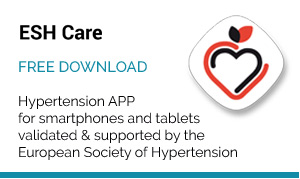Hypertension 2008
Altering the quantity and quality of dietary fatty acids may influence blood pressure (BP) in subjects with metabolic syndrome. Among men in particular, new data from LIPGENE suggest that some fats increase systolic BP and pulse pressure while others have the opposite effect.
Saturated and trans-fatty acids raise total cholesterol and LDL-cholesterol and increase the risk of coronary heart disease, while dietary unsaturated fatty acids play important roles in maintaining cardiovascular health. Understanding how dietary macronutrient composition – protein, carbohydrates, and fats – affects cardiovascular risk factors, including BP, is a vitally important component of fighting obesity and the metabolic syndrome.
Effective strategies to tackle this major public health problem and to decrease dependence on medical management are issues at the heart of LIPGENE, an integrated approach to tackling the metabolic syndrome. Funded by the European Commission, it investigates the interactions between dietary constituents and the genome in the development of chronic diseases. (1) One of the research themes of LIPGENE is human nutrition, including a dietary intervention study.
Dietary fatty acids affect plasma lipids and lipoproteins, but the impact of dietary fatty acids on BP is controversial. At Hypertension 2008, investigators (presenter: Hanne L. Gulseth) from the University of Oslo(Norway), presented data demonstrating the effect of changing the quantity and quality of dietary fatty acids on BP in 486 individuals with metabolic syndrome. The primary endpoint was insulin sensitivity and BP was a secondary endpoint.
A food exchange model was used to achieve dietary goals and a range of modified food products were especially produced and provided to volunteers, complete with dietary counseling. The total number of calories consumed was not to change during the study; only the type and amount of dietary fat differed. Patients were randomized to one of four diets, with the control diet being a high-fat, predominantly saturated fat diet. A second high-fat diet was high in monounsaturated fatty acids (MUFA). Two low-fat diets emphasized high complex carbohydrates; one included omega-3 supplementation and the other a placebo.
Both low-fat diets and the high-fat MUFA diet significantly decreased systolic BP (p < 0.05 compared to baseline) but there was no effect on diastolic BP. Subanalysis revealed an interesting gender difference. Compared to baseline BP levels, there was a significant BP-lowering effect (approximately 4 mm Hg) among males on either of the low-fat diets but no significant change from baseline for the two high-fat diets. There was also a significant difference between the low-fat diet with omega-3 supplementation compared to the control diet.
Pulse pressure did not differ between diets in the total cohort, but in males there was a trend towards increasing pulse pressure levels with the diet high in saturated fat, while MUFA and low-fat diets all tended to decrease pulse pressure.
Thus, in the LIPGENE dietary intervention study, low-fat diets have a small but significant influence on systolic BP and even a high-fat diet that is based largely on MUFA will reduce systolic BP compared to a high saturated fat diet. In males in particular, a high saturated fat diet increases systolic BP and pulse pressure compared to monounsaturated- and low-fat diets, where the trend is just the opposite.
References:
- Buttriss J, Nugent A. LIPGENE: an integrated approach to tackling the metabolic syndrome. Proc Nutr Soc 2005;64:345-7.






